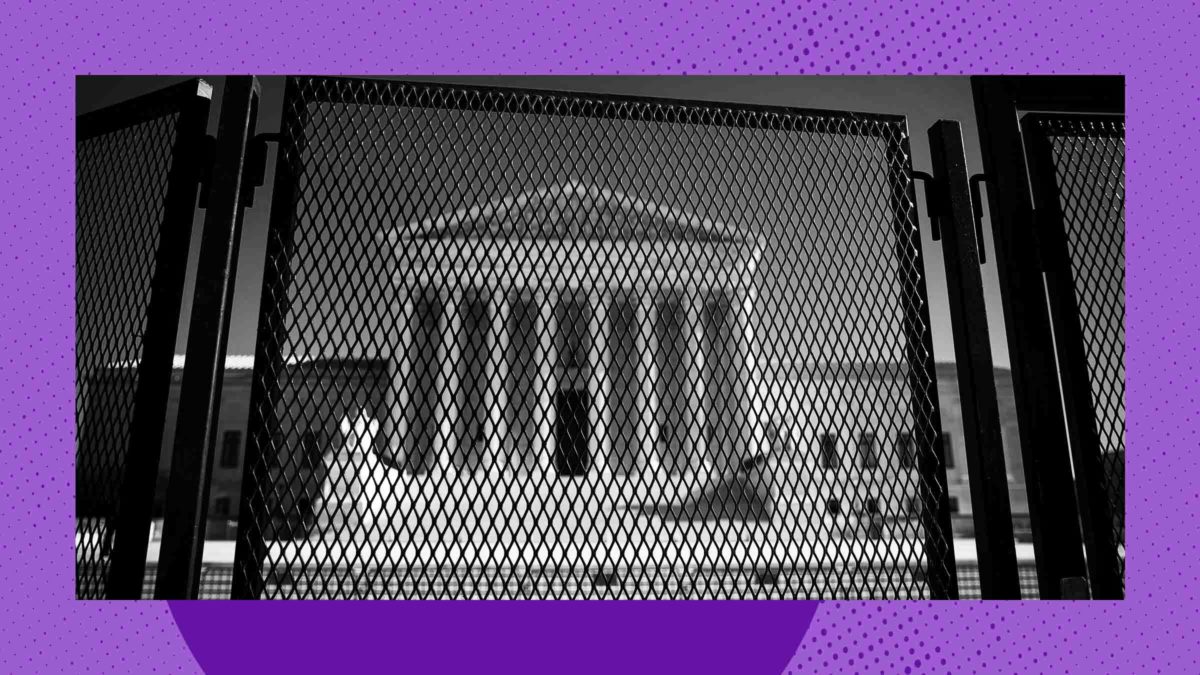Last week, the Supreme Court granted certiorari in the case of John Cruz, a man whom the state of Arizona very much wants to execute. The state insists it can do so despite the fact that the judge who presided over Cruz’s trial issued a deceptive jury instruction that directly contradicted existing Supreme Court precedent. Yet the Arizona Supreme Court has repeatedly thumbed its nose at the U.S. Supreme Court, concluding via a series of logical gymnastics that Cruz failed to meet state law requirements that would make him eligible for a new trial. Now, the justices will decide whether their counterparts in Arizona will get away with it.
In 2005, an Arizona jury convicted John Cruz of killing Patrick Hardesty, a Tucson police officer. As the jury considered his sentence, the trial judge gave them an instruction that can best be summarized as a big ol’ lie: Unless they condemned Cruz to death, the judge explained, he would face a life sentence “with a possibility of parole or release from imprisonment” after 25 years. This was objectively not correct; in reality, Arizona had outlawed parole for people convicted of felonies over a decade prior.
This should have been a fairly open-and-shut case of judicial error. In the 1994 case of Simmons v. South Carolina, the U.S. Supreme Court held that if a defendant’s future dangerousness is at issue during sentencing, the defendant has a due process right to a jury instruction making clear they are not eligible for parole. The Simmons Court reasoned that for jurors debating between life in prison and the death penalty, their calculus might be fundamentally different if they knew the defendant would never be released from custody.
The Arizona legal system, however, plays by its own rules. For years, state court judges flouted Simmons, sentencing Cruz and six others to death without proper jury instructions. In reviewing each conviction, the Arizona Supreme Court stated that because “future release is possible” via executive clemency, Simmons didn’t apply. Executive clemency is the governor’s power to forgive someone convicted of a crime via pardon, commutation, or reprieve. Arizona has a particularly bleak history of dispensing with these requests: No Arizona governor has ever granted clemency to someone sentenced to death. Affirming unfair convictions because of the hypothetical possibility of unprecedented executive intervention is like refusing to give someone welfare benefits because they can technically still win the lottery.
The Supreme Court couldn’t have been too upset by Arizona’s lawlessness, since it denied Cruz’s petition for review in 2009. It wasn’t until 2016, in Lynch v. Arizona, that the Court decided to finally step in. In Lynch, the justices clarified that, actually, the Court’s precedent does apply in Arizona, as it does in all the other states that also allow for the possibility of gubernatorial pardons. “Simmons expressly rejected the argument that the possibility of clemency diminishes a capital defendant’s right to inform a jury of his parole ineligibility,” the Court wrote in a per curiam decision.

A corrections officer shows reporters Arizona’s gas chamber in 1999 (Photo By Mike Fiala/Getty Images)
After Lynch, Cruz moved for post-conviction review in state court. After a clear rebuke from the U.S. Supreme Court, there should have been no doubt that he was entitled to a new trial. But still, the Arizona Supreme Court bent over backwards to find a reason not to revisit Cruz’s case. State law typically requires people to base requests for post-conviction relief on a “significant” change in the law. The Arizona Supreme Court decided that Lynch didn’t qualify because it was consistent with “well-established” precedent. In other words, after flouting Simmons for decades, these judges declared that Simmons had applied all along, and Lynch didn’t change things enough to make a difference. “As there was ‘[n]o state law [that] would have prohibited Cruz’s release on parole after serving twenty-five years, had he been given a life sentence,’ this Court concluded that Cruz’s situation was distinguishable from that of the defendant in Simmons,” the court wrote.
Thus, Cruz finds himself back before the U.S. Supreme Court, which will decide whether the Arizona court arrived at this result on “adequate and independent state grounds”—the notion that the U.S. Supreme Court can’t overturn state court decisions that don’t involve questions of federal law. At stake is Arizona’s obligation to uphold the federal constitutional rights of people convicted of crimes, particularly those sentenced to death. In a filing with the Court, Cruz’s lawyers characterize the state’s claim—that a procedural rule that conflicts with federal law can “insulate a clear constitutional violation” from federal judicial review—as “remarkable and wrong.”
Arizona’s arguments are reflective of growing conservative efforts to lower the floor on constitutional rights by narrowing the scope of federal oversight. The Constitution is meant to outline the bare minimum of what the legal system requires. While states can interpret their own constitutions more broadly, they cannot limit the federal Constitution’s guarantees. If the Court agrees with Arizona, it will open the door for other states to hollow out other fundamental rights in the name of state sovereignty.
The winding path of Cruz’s case also highlights the fact that the Court doesn’t have a mechanism to enforce its decisions, and depends for its power on collective acceptance of its authority. The Arizona Supreme Court’s actions show how easily efforts to erode that power can succeed. The Court decided Simmons in 1994. It didn’t correct Arizona’s violations of Simmons until 2016. Six years later, Arizona courts are still ignoring this directive, and the Court is once again reduced to, at best, issuing a strongly worded letter ordering them to stop.
Arizona, which refurbished its gas chamber just last year, seems committed to killing as many people as the Supreme Court will allow. The only remaining question is the degree of unfairness that the justices are willing to stomach.

